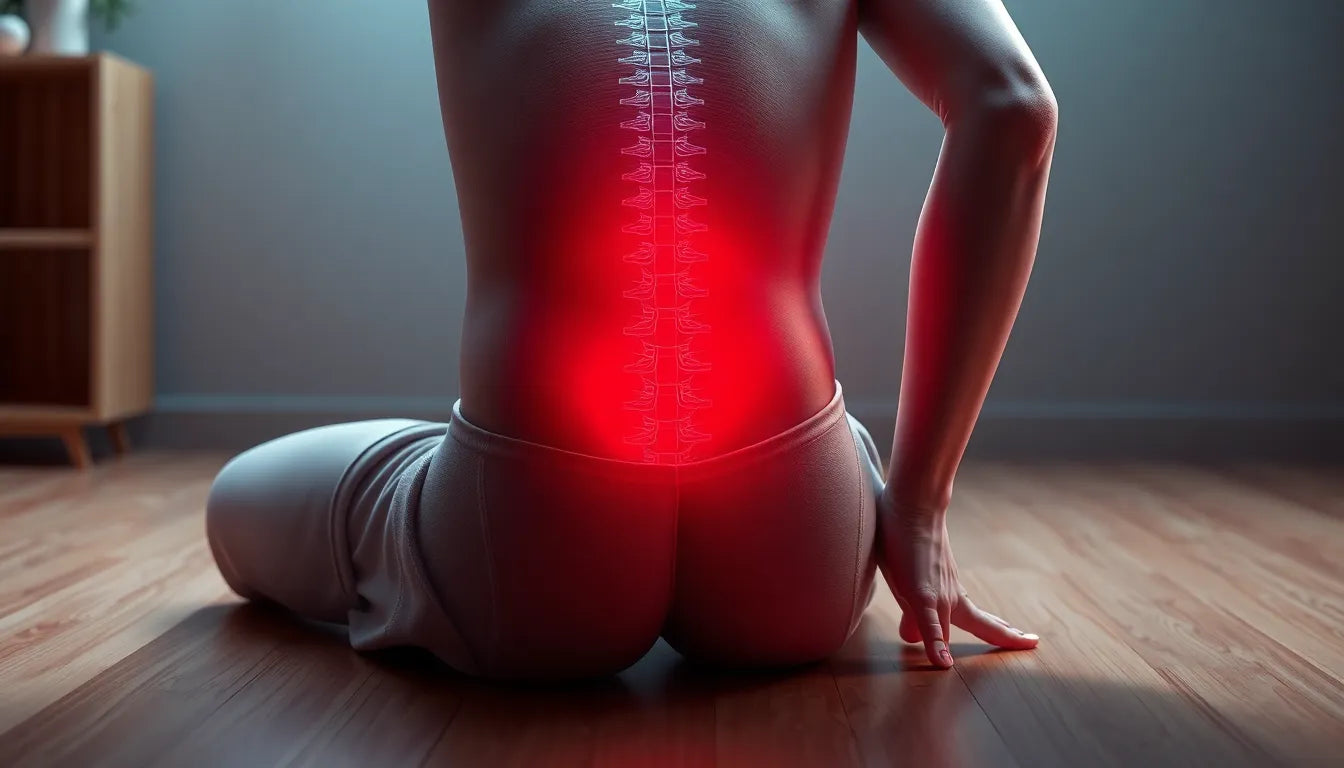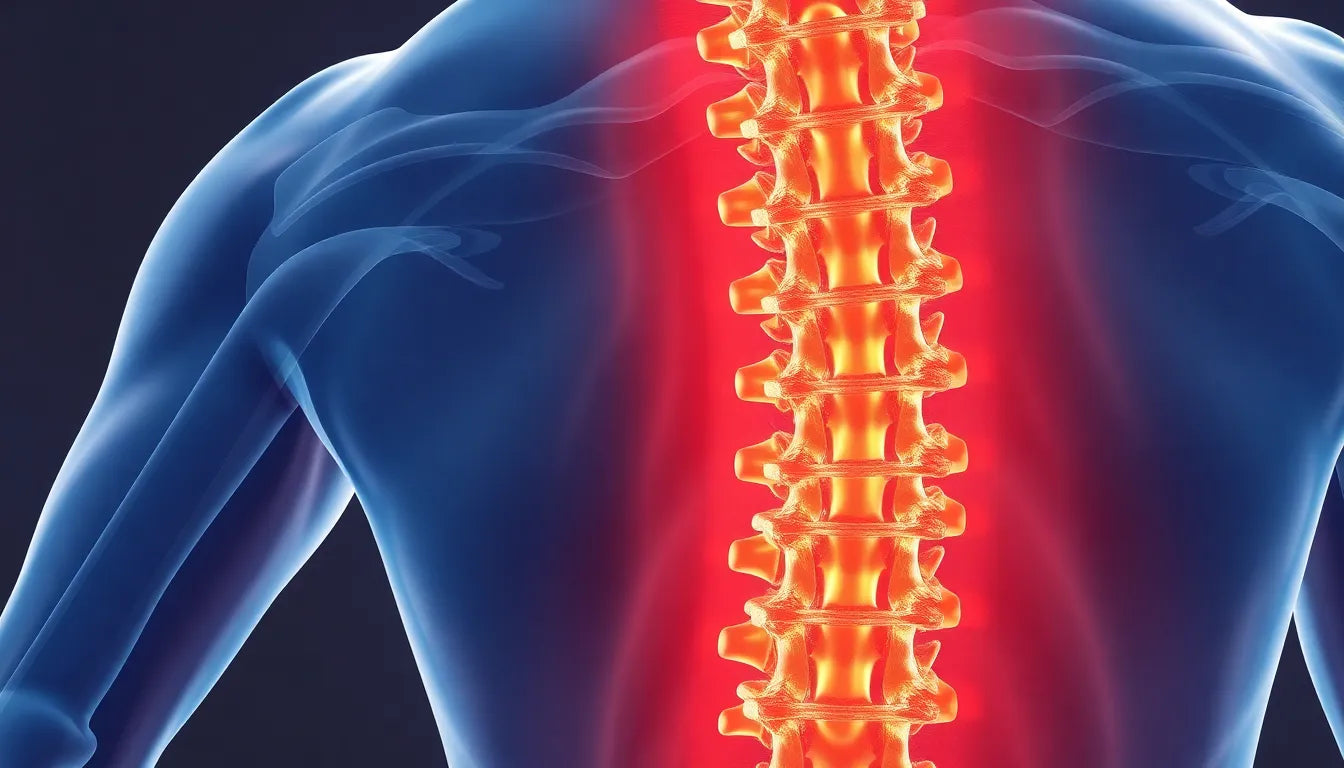Spinal health is a complex and often mysterious subject, with the herniated disc being one of its most intriguing components. For many, understanding what a herniated disc looks like is essential, not only for those experiencing symptoms but also for anyone seeking to better comprehend spinal health. This knowledge can be crucial in demystifying the discomfort and aiding in the pursuit of effective treatment options.
Why understanding herniated discs matters
Herniated discs, often referred to as slipped or ruptured discs, occur when the soft center of a spinal disc pushes through a crack in the tougher exterior casing. This condition can lead to pain, numbness, or weakness in an arm or leg, depending on the location of the herniation. Recognizing what a herniated disc looks like is pivotal for proper diagnosis and treatment, as the visual evidence from medical imaging, particularly MRI scans, plays a critical role in identifying these structural anomalies.
The purpose of visualizing herniated discs
The aim of this post is to provide a detailed visual and descriptive guide to what a herniated disc looks like, using MRI imaging as the primary tool for visualization. MRI, or Magnetic Resonance Imaging, offers an unparalleled view of the spinal structure, making it the gold standard for diagnosing herniated discs. By visually comparing healthy discs to herniated ones, individuals can gain a clearer understanding of the condition, which is invaluable for both patients and healthcare providers.
In the following sections, we will delve deeper into the specifics of MRI imaging, explore the clinical implications of herniated discs, and provide visual comparisons to enhance your understanding of this common spinal issue. By the end of this exploration, you will have a comprehensive view of what a herniated disc looks like and the significance of these changes in the context of spinal health.
understanding mri imaging for herniated discs
Magnetic Resonance Imaging (MRI) is a powerful diagnostic tool that uses magnetic fields and radio waves to create detailed images of the body's internal structures. When it comes to visualizing herniated discs, MRI stands out due to its ability to capture the intricate details of spinal anatomy without the need for radiation. This makes it particularly valuable for identifying and assessing spinal disc conditions.
On an MRI scan, healthy spinal discs appear as bright, white structures due to their high water content and well-hydrated nature. They maintain a regular, symmetrical shape between the vertebrae. In contrast, a herniated disc disrupts this uniformity. It often appears darker and more irregular, indicating a loss of hydration and structural integrity. The herniation itself is visible as a bulging or protruding area that may encroach upon the spinal canal or nerve roots.
structural changes and their implications
One of the most significant features of a herniated disc on an MRI is the structural change it undergoes. The herniation can lead to a loss of disc height, as the disc material pushes outwards, often compressing adjacent nerves. This compression is a primary reason for the neurological symptoms associated with herniated discs, such as pain, numbness, or tingling in the extremities.
The degree of herniation and its location are critical in determining the severity of symptoms. For instance, a herniation in the lumbar region may affect the sciatic nerve, leading to sciatica, characterized by pain radiating down the leg. Conversely, a cervical herniation could result in symptoms affecting the arms or shoulders. Understanding these structural changes through MRI is crucial for healthcare providers to develop effective treatment plans tailored to the patient's specific condition.
clinical implications of visualizing herniated discs
The visual features of a herniated disc on an MRI are closely linked to the clinical symptoms experienced by patients. By correlating these images with patient-reported symptoms, healthcare providers can more accurately diagnose the condition and its impact on the patient's daily life. This correlation is vital for determining the appropriate course of treatment, whether it involves conservative management like physical therapy or more invasive procedures such as surgery.
Moreover, the ability to visualize the exact location and extent of the herniation helps in assessing the potential for nerve damage and the urgency of intervention. Early and accurate diagnosis can prevent further complications and improve patient outcomes, making MRI an indispensable tool in spinal health management.
visual comparisons and case studies
To further enhance understanding, diagrams and illustrations are invaluable in comparing healthy, bulging, and herniated discs. These visual aids can clarify how a herniated disc deviates from normal anatomy and the resulting impact on surrounding structures. For example, a simple diagram showing a cross-section of the spine can highlight how the herniated portion of a disc presses against a nerve root, leading to discomfort and neurological symptoms.
Hypothetical case studies can also illustrate the diverse presentations of herniated discs. For instance, consider a patient with a lumbar herniation experiencing severe lower back pain and leg weakness. An MRI reveals a significant protrusion compressing the sciatic nerve, explaining the symptoms and guiding treatment decisions. These case studies not only provide real-world context but also demonstrate the importance of personalized diagnosis and treatment plans.
By delving into these aspects, we gain a comprehensive understanding of what a herniated disc looks like and its implications for spinal health. This knowledge empowers patients and healthcare providers alike to make informed decisions about managing and treating this common spinal condition.
Diagnosis and treatment pathways for herniated discs
Magnetic Resonance Imaging (MRI) remains the gold standard for diagnosing herniated discs due to its precision in capturing detailed images of spinal structures. While other imaging modalities like X-rays or CT scans can provide some insights, they lack the clarity and detail that MRI offers, especially when it comes to soft tissue evaluation. This makes MRI indispensable for accurately identifying the location and severity of a herniation.
Once a herniated disc is diagnosed, treatment options can vary based on the severity and symptoms. Conservative management often involves physical therapy, pain management, and lifestyle modifications aimed at reducing symptoms and preventing further injury. These non-invasive methods are typically the first line of treatment, especially for mild to moderate cases.
However, if conservative treatments fail to alleviate symptoms or if the herniation is severe, surgical intervention may be necessary. Procedures such as discectomy or spinal fusion can provide relief by removing or repairing the damaged disc material. The choice of treatment depends on various factors, including the patient's overall health, the extent of the herniation, and the specific symptoms experienced.
Frequently asked questions
What does a herniated disc look like on an MRI?
A herniated disc on an MRI appears as a protrusion from its normal space. It is often darker and more irregular compared to healthy discs, which are bright and well-hydrated.
How does a herniated disc cause pain?
The protrusion of a herniated disc can compress nearby nerves, leading to pain, numbness, or tingling in areas served by those nerves. This compression is a common cause of the discomfort associated with herniated discs.
Can a herniated disc heal on its own?
Some herniated discs may heal over time with conservative treatment, such as physical therapy and medication. However, others may require more intensive medical intervention, depending on the severity and persistence of symptoms.
What are the common symptoms of a herniated disc?
Common symptoms include localized pain, numbness, tingling, and muscle weakness. These symptoms can vary based on the affected nerves and the location of the herniation.
How is a herniated disc treated?
Treatment for a herniated disc can range from conservative approaches like physical therapy and medications to surgical options. The choice of treatment depends on the severity of the herniation and the patient's response to initial treatments.
Sources
- ADR Spine. "Understanding Herniated Discs Through MRI."
- WebMD. "Herniated Disc Overview."
- Deuk Spine. "Reading MRI Scans for Herniated Discs."
- MyHealth Alberta. "Herniated Disc: Patient Education."
- Radiopaedia. "Disc Herniation: Radiographic Features."
- Physio-pedia. "Clinical and Diagnostic Process for Herniated Discs."


















